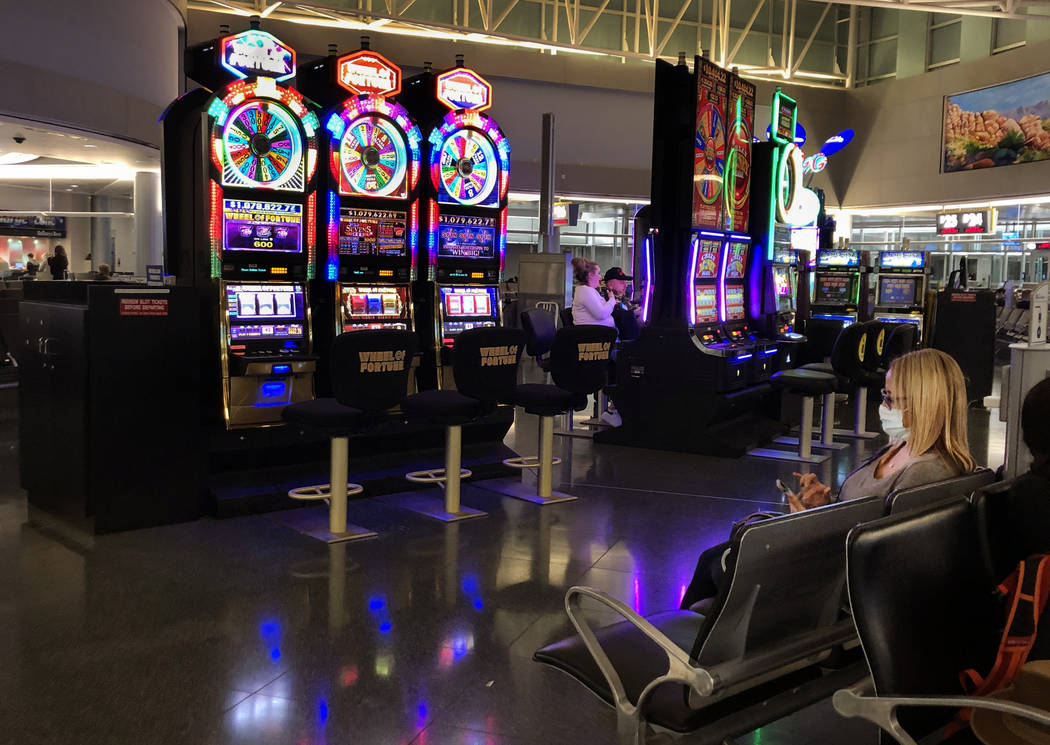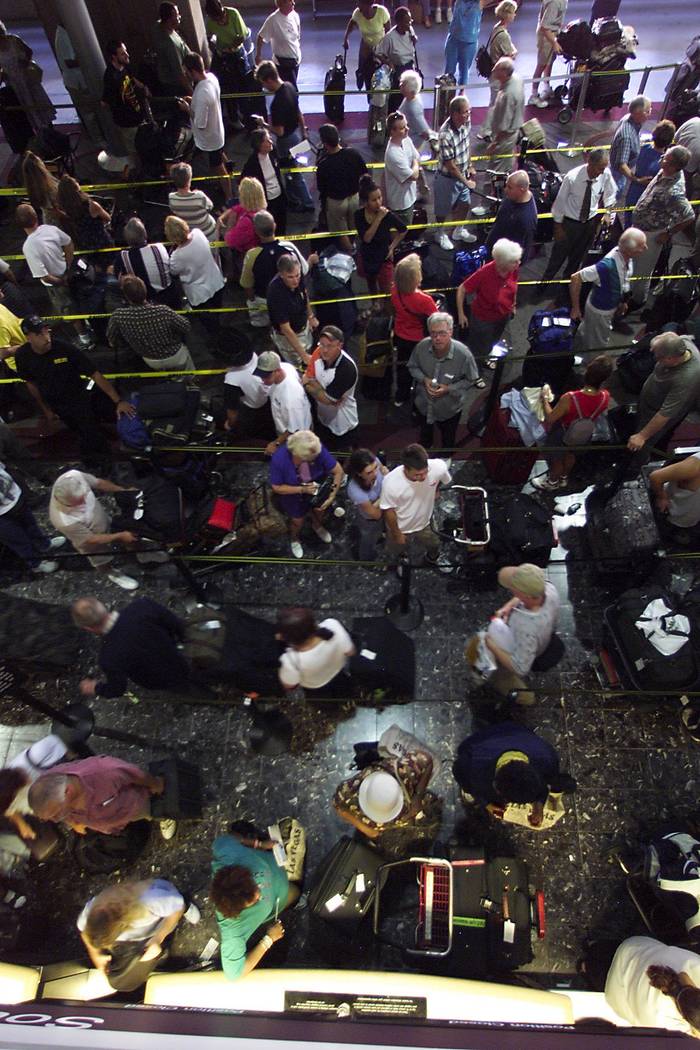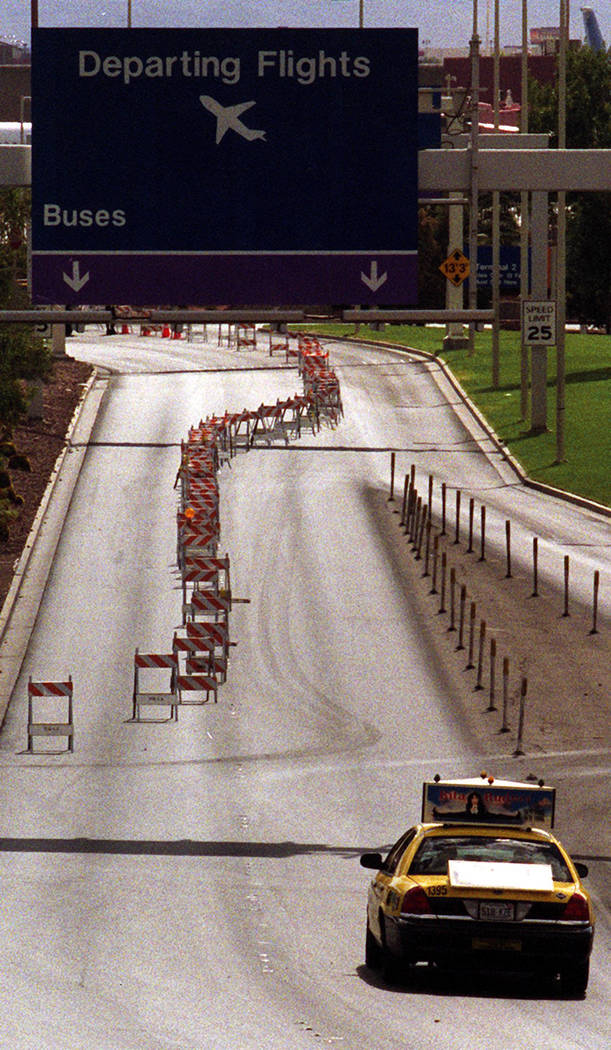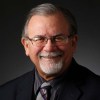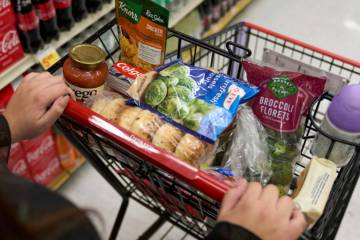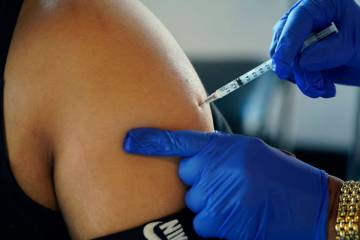Coronavirus, economic fallout prompts look back to Las Vegas after 9/11 attacks
When terrorists flew commercial airliners into the World Trade Center in New York and the Pentagon in Washington on Sept. 11, 2001, Las Vegas couldn’t escape the economic fallout that followed.
And it’s unlikely Las Vegas will be able to dodge the economic damage inflicted by the coronavirus outbreak, either.
Business and academic leaders are seeing as many differences as similarities between the two calamities, which delivered gut punches to the region’s travel and tourism industries.
When 9/11 occurred, federal government authorities immediately closed the nation’s airspace and grounded planes. Visitors to Las Vegas were stranded in their hotels, and the stunned public watched television coverage of one of the tallest buildings in the world being reduced to rubble.
By contrast, there have been no explosions or dramatic footage from the coronavirus outbreak, except for the thousands of people wearing surgical masks in some public settings.
While travelers to Las Vegas were glued to television monitors in casinos to watch the World Trade Center collapse, the news — and sometimes false rumors — moves even faster to cellular telephones in the new age of Facebook and Twitter.
The mystery now is how long damage from the coronavirus outbreak will last.
“9/11 turned out to be a very large shock, but it happened at one point in time, and the residual fear that caused people to cut back on their travel didn’t last that long,” said Stephen Miller, a business professor and director of UNLV’s Center for Business and Economic Research.
“The problem with the current situation is we just don’t know how deep a problem it’s going to be and how long it’s going to last,” he said. “Is it going to be three months and then end in the summer like a typical case of the flu or will it continue through the summer? And if it doesn’t continue through the summer, will it pick up again in the fall and will we have a vaccine against the virus?”
Transportation expert Tina Quigley, formerly with the Regional Transportation Commission of Southern Nevada and Virgin Trains USA, was employed by McCarran International Airport during 9/11.
U.S. airspace was closed at 6:45 a.m. Las Vegas time, and throughout the day passengers arriving at McCarran found that their flights had been grounded.
“Nobody was allowed in, but to see an airport completely empty of passengers and people was so eerie,” Quigley said. “There were long lines outside, and we were passing out water because it was still kind of hot. What a moment in time it was for all of us.”
Quigley’s perspective of the difference between 9/11 and the virus outbreak was “complete shock vs. growing panic.”
Severe first impact
The 9/11 impact was severe at first.
Based on statistics provided by the Las Vegas Convention and Visitors Authority, visitation in September 2001 was down 14.1 percent from the previous year, to 2.5 million people. Convention attendance dived 37.4 percent to 163,528.
At a time when Las Vegas had 125,126 hotel rooms — there are 149,900 today — occupancy rates fell 14.4 percentage points to 73.7 percent. The number of passengers flying into McCarran fell 28.3 percent, to 2.1 million, and Clark County gaming win was off 2.4 percent, to $594.9 million.
Las Vegas had been riding a 1 percent increase in visitor volume over 2000 for the first eight months of the year.
It didn’t get much better over the next three months. In October, November and December, visitor volume was down 7.9 percent, 8.6 percent and 6.2 percent, respectively, from a year earlier. Convention attendance fell 6 percent in October and 23.1 percent in November.
Kevin Bagger, vice president of the LVCVA Research Center, said there were relatively few convention cancellations after 9/11, the PGA Golf Expo and the International Vision Expo among them.
Bagger said the drop in leisure visitation was the more serious issue after 9/11.
McCarran passenger counts fell by double-digit percentages the rest of the year, and gross gaming win was off 6.1 percent, 8.4 percent and 7.1 percent in the last three months of 2001. The occupancy rate never went above 82.6 percent the rest of the year.
Visitor volume managed to squeak up 0.2 percent in 2002 to 35.1 million people, and convention attendance managed to rise 1.8 percent to 5.1 million.
The hotel occupancy rate didn’t fully recover until 2007, the last year before the Great Recession reared its head, when it reached 90.4 percent. Gross gaming revenue hit its peak in Clark County in 2006 at $10.9 billion.
Encouraging recovery
The recovery numbers are encouraging to R&R Partners principal Billy Vassiliadis, whose company advises the LVCVA on when to resume advertising the destination after a tragedy. R&R did it after 9/11, after the Oct. 1, 2017, shooting and, most recently, after the death of basketball star Kobe Bryant on the day a new ad campaign was launching.
He said 9/11 was dramatic, but the rebound was more predictable than what he expects with the coronavirus.
“We began to see customer surveys rather quickly, people saying, ‘I need an escape,’ ” Vassiliadis said. “They didn’t want to make a long-term commitment or book a trip to Europe or anything like that, but they felt they needed to just get away from it. So we started to see some rebounding rather early. It helped that McCarran was one of the first airports to be certified to reopen.”
While there were still indications that terrorists were going to try to inflict more damage, most felt relatively secure.
“I think the big difference is that in some point in time — for Vegas, it was actually closer to November — people were beginning to say, ‘OK, 9/11 happened; it’s over.’ President Bush was talking about not letting this affect our normal lives,” he said. “We were able to begin to present that it was time for you to escape, time for you to get away and do this and that.”
Low risk seen
Vassiliadis said the best strategy is to keep restating the facts.
“Our risk continues to be low. The idea of contact doesn’t mean being in the same area code or even in the same arena. It means prolonged contact within 6 feet of the person who may (be afflicted),” he said. “So we can get more of those facts out. All that stuff needs to be out there. Does that get us back to 100 percent? No, but I think we could begin to see some return of travel, maybe even a different traveler that will come more often.”
How damaging will the coronavirus be? It depends on how long the worries last. Miller had a business college colleague, the late Keith Schwer, who survived the 9/11 attack at ground zero and in 2007 developed a model of the damage that could be inflicted by a pandemic on a tourism economy.
“It was a hypothetical Asian flu event,” Miller said. “And it lasted three months of the year and it resulted in a 20 percent cut in demand in the tourism sector, and that led to about a 3.5 percent cut in employment.”
“In today’s numbers, that would be about 37,000 people and a 3 percent cut in the gross domestic product, $3.6 billion today.”
Contact Richard N. Velotta at rvelotta@reviewjournal.com or 702-477-3893. Follow @RickVelotta on Twitter.



